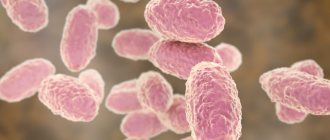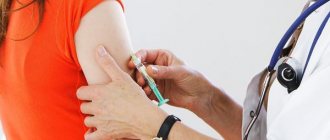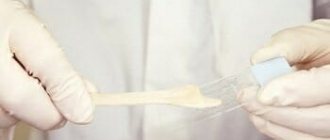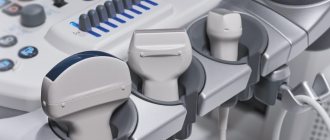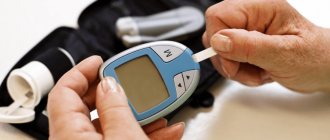Gonococci are the simplest microorganisms that provoke the development of gonococcal infection. When they enter the body, they attach to the cervix. Microorganisms trigger a purulent inflammatory process that affects the mucous membrane of the genitourinary organs. Gonococci in a smear in women indicates the development of a sexually transmitted disease such as gonorrhea. It requires immediate treatment. Therefore, when the first signs appear, you should immediately consult a doctor.
When do you need to take a Gonorrhea test, DNA of the pathogen (Neisseria gonorrhoeae, PCR) scraping, quality?
- Annual preventive examination.
- Differential diagnosis of acute and chronic infections of the genitourinary system.
- Any surgical interventions on the part of the genitourinary organs, including “minor operations” (curettage).
- Menstrual irregularities.
- Habitual miscarriage.
- Medical preventive examination of pregnant women, representatives of decreed groups of the population.
- Reactive arthritis.
- Infertility.
- Monitoring the effectiveness of treatment for gonococcal infection.
How to prepare for a smear test
If the gynecologist has prescribed a vaginal smear, you need to:
- refuse sexual relations one or two days before the examination;
- stop douching and refuse any intimate hygiene products two to three days before the examination. It is recommended to wash the genitals with warm water;
- stop using any medications in the form of tablets, suppositories or sprays a week before the examination. The exception is those cases when their use was agreed in advance with a gynecologist;
- In the evening before the examination, it is necessary to perform genital hygiene. On the day of the examination, in the morning, you do not need to wash yourself;
- refrain from going to the toilet two to three hours before taking a smear.
A bacteriological smear from the vagina is often carried out in the first few days after the end of menstruation or before it begins. If your period begins on the days on which the examination is scheduled, you should try to reschedule your visit to the doctor.
Detailed description of the study
The study aims to quantify the DNA of the causative agent of gonorrhea using polymerase chain reaction in real time. Used for the diagnosis of gonococcal infection and for preventive examination of elective populations and pregnant women.
Gonococcus (Neisseria gonorrhoeae) is a bacterium that primarily affects the genitourinary organs. Gonorrhea of the rectum is also possible, rarely - the eyes, pharynx, tonsils, and even more rarely - generalization of the infection. Sexual transmission of the infection is 99%, but gonococci remain viable in pus and mucus (until the substrate dries), which makes non-sexual infection possible. In the blood, the pathogen dies under the influence of the bactericidal activity of the serum, so generalization of the infection occurs extremely rarely.
Molecular biological research performed by PCR is aimed at detecting specific DNA fragments of N. Gonorrhoeae and makes it possible to differentiate gonorrhea from other inflammatory diseases of the genitourinary organs with a similar clinical picture, identify asymptomatic and low-symptomatic forms of the disease, and establish the cure of the disease.
Clinical manifestations of gonococcal infection:
- urethritis;
- colpitis;
- cervicitis;
- proctitis;
- pharyngitis;
- angina.
The respiratory tract is affected less frequently than the genital tract. The incubation period for men lasts 2-15 days, for women up to 21 days. The disease can take a long time and be secretive.
But most infected people experience one or more symptoms:
- purulent discharge from the genitals;
- pain when urinating;
- itching in the genital area;
- painful sensations during sexual intercourse.
The lack of timely adequate therapy leads to consequences:
- prostatitis in men;
- inflammation of the fallopian tubes and ovaries in women;
- infertility.
What are gonococci?
The causative agent of gonorrhea is non-stainable, immobile bacteria that are arranged in pairs. Outwardly, they resemble coffee beans. Bacteria are not afraid of phagocytosis. Despite all the body's attempts, they continue to be active and reproduce.
Antibacterial drugs are often used to combat gonococci. If you take them incorrectly, then it is impossible to achieve the effect. Under the influence of agents, the walls of bacteria are destroyed, but the ability to develop remains. Due to their high survivability, they are able to change characteristics. In the presence of carbon dioxide and normal temperature conditions (37 0C), gonococci actively multiply in an artificial nutrient medium.
Important Notes
Material for research
Clinical material for laboratory research can be:
- in women: discharge (scraping) of the urethra, cervical canal, vagina, lower rectum; if indicated - discharge from the oropharynx, large vestibular and paraurethral glands, mucous membrane of the conjunctiva of the eyes;
- in men: discharge (scraping) of the urethra; if indicated - discharge of the lower rectum, oropharynx, mucous membrane of the conjunctiva of the eyes;
- in children and girls who have not had sexual intercourse: discharge from the urethra, posterior fossa of the vestibule of the vagina, lower rectum; when examined using children's gynecological speculum - discharge from the cervical canal, if indicated - discharge from the oropharynx and conjunctiva.
Deciphering a smear for gonococcus
The main task of the smear is to determine if there is inflammation in the urethra. To do this, the leukocyte level is checked. In the presence of an inflammatory process, their number rapidly increases. Even with a low-active form, changes will be visible. Normally, a smear for gonococci in women should show a slight increase in the level of immune cells. Otherwise, the doctor diagnoses the presence of an inflammatory process.
Deciphering a smear for gonococci in women can show the presence of the following microorganisms in the body:
- gonococci;
- mobiluncus;
- yeast;
- leptothrix and others.
Treatment for gonococci in a smear in women cannot be prescribed against the background of one analysis. The presence of microorganisms in clinical material indicates that a comprehensive examination is necessary. Only after this the doctor selects therapy.
general characteristics
Neisseria gonorheae is a gram-negative diplococcus, which is the causative agent of gonorrhea and causes inflammation of the mucous membrane of the genitourinary organs, damage to the conjunctiva, nasopharynx, rectum, generalization of the process is possible. Gonococci affect mucous membranes covered with columnar epithelium, located inside leukocytes and epithelial cells. When the process becomes chronic, gonococci change in size and color intensity, and with inadequate treatment forms L-forms. All these features determine the difficulty of diagnosing this disease and monitoring the effectiveness of treatment. Newborns can become infected when passing through the birth canal with the possibility of damage to the eyes and oropharynx.
Modern methods of diagnosing gonorrhea
The main method for diagnosing gonorrhea is laboratory. Clinical examination and interviews only make it possible to suspect the disease, but its treatment and final diagnosis are possible only after laboratory confirmation. This is important for a specific effect on the pathogen. Currently, the following methods of laboratory diagnosis of gonorrhea are used:
- bacteriological analysis;
- bacterioscopic examination;
- carrying out express tests (counter electrophoresis reaction);
- studying the immune fluorescence reaction;
- analysis for immunoenzyme status;
- serological research method (according to the Bordet-Gengou reaction):
- PCR and LCR;
- carrying out provocative tests.
Let's take a closer look at these methods.
Bacteriological analysis
Sowing biological material on nutrient media is called the bacteriological, microbiological, cultural method. Laboratory reagents placed in suitable conditions of temperature and humidity are used as the medium. After a time sufficient for the growth of the bacterial colony, the media are examined for the presence of the gonorrhea pathogen. In addition to the presence of colonies with bacteria, their reaction to antibacterial drugs, the presence or absence of sensitivity to specific drugs is assessed.
The study has a high level of specificity and makes it possible to simulate the effect on microorganisms in laboratory conditions and evaluate their response to antibiotics. This improves the quality and effectiveness of treatment, reduces the risk of dysbiosis and complications of the infectious process.
Bacterioscopic examination
This is the most common diagnostic method and does not require much time. The biological material is applied to laboratory glass, after which it is stained using special techniques. For this purpose, special dyes and the sequence of their application are used. This allows different cell structures to turn different colors. The different structures of gonococcal cells and blood cells make it possible to identify the pathogen that stains more intensely.
In order to improve the quality of bacterioscopy, it is necessary to correctly observe the proportions of reagents and use only high-quality reagents and laboratory equipment. Otherwise, the reaction may not occur and the test results will be false.
Carrying out express tests (counter electrophoresis reaction)
For the study, special test strips are used, which can be used under the supervision of a doctor or independently. This test is easy to use, its results are easy to decipher, since the presence of infection is manifested in the form of two stripes on the test. This technique can be used in case of suspicion, for differential diagnosis, after questionable sexual intercourse.
Express diagnostics is based on the counter-electrophoresis technique. The technique ensures the binding of antibodies and antigens in serum. If the patient is infected, a reaction occurs and an immune complex is formed. This is considered a positive result and means that there is a pathogen in the body. A feature of the diagnosis is a low level of specificity, so this is not the final diagnostic option. It is better to consult a doctor if the test is positive in order to confirm or rule out the diagnosis.
Study of immune fluorescence response
This diagnostic method is quite accurate and specific, but requires appropriate conditions, equipment and trained personnel. During the reaction, it is necessary to use only high-quality reagents, because their condition affects the results of the study. The material for analysis is a smear from the mucous membrane. The resulting smear is stained using a special technique using specific dyes. They contain a luminous element that is illuminated when working with a microscope. Coloring occurs in parallel with the immune reaction. Detection of fluorescence indicates the presence of a pathogen in the body. This is explained by the fact that labeled antibodies form complexes, which are seen by medical personnel under a microscope. Such a complex looks like a luminous circle. The technique allows you to determine the disease at different stages. The sensitivity of the method is about 80%. The analysis is carried out in a short time, which is also its advantage.
Analysis for immunoenzyme status
The peculiarity of this technique is the identification of antibodies to the pathogen. The only drawback of this study is that it occasionally produces false positive results. The specificity of the enzyme immunoassay is almost 99%, and the sensitivity of the method reaches 93-94%. It is worth noting that the study does not require taking material from the mucous membrane of the genitourinary tract. The patient's midstream urine sample is examined. The essence of the technique is based on the release of specific enzymes during the antigen-antibody reaction, which confirms the presence of infection in the body. Compared to other methods, enzyme immunoassay is not used as often; its need is determined by the attending physician.
Serological research method (using the Bordet-Gengou reaction)
This is a complement fixation reaction, which relates to immunological research and is based on the formation of an immunocomplex from an antigen and antibodies to it. This complex is capable of fixing free complement, which is the essence of the method. First, the antibodies produced by the body attach to the surface of the pathogen, and after that, hemolysis occurs, which occurs in the presence of a specific system. Laboratory staff study this process under appropriate conditions and using specific reagents. A specific indicator is used, in the presence of which hemolysis occurs. Also, specific serums and reagents are used for these techniques.
PCR and LCR
These are molecular research methods in which various biological material is examined from a patient suspected of having gonorrhea. The methods are highly accurate and sensitive. There are polymerase chain reaction and ligase chain reaction. Depending on the type of enzyme, it is possible to detect one or another part of the genetic material of the pathogen, which confirms the presence of pathology in the body. This method is considered the gold standard in diagnosing infectious diseases and is widely used in modern medicine.
Conducting provocative tests
If the above methods exclude the presence of gonococci in the body, but the doctor still suspects this diagnosis, provocative tests are performed. They are carried out using immunological, chemical, thermal techniques. Each test is carried out under certain conditions using reagents. The essence of the study is to artificially exacerbate inflammation, during which pathogens of the disease can be detected. Tests are prescribed by the attending physician, taking into account the patient’s condition, his background pathology and anatomical features.
Treatment at home
Gonorrhea is a dangerous infectious disease that should not be treated on its own. The venereologist will be able to select effective drugs in a dosage that will not cause side effects in the patient. Screening will allow the doctor to assess the course of the disease and make sure there are no concomitant infections or prescribe additional medications if they are identified.
Self-medication is the first step towards the transition of gonorrhea to the chronic stage. An incorrectly calculated dosage of drugs by the patient relieves acute symptoms of the disease, but does not ensure complete recovery.
Preparing to visit the doctor
A patient’s visit to a venereologist is often accompanied by tests. To obtain correct results, you should follow a few simple rules:
- stop taking medications (antibiotics) that may affect the accuracy of the screening;
- do not urinate for 1.5-2 hours before the appointment to ensure correct smear data;
- avoid the use of genital creams and ointments;
- do not use local baths and do not shower 6-8 hours before your appointment;
- do not eat for 3-4 hours before visiting a venereologist.
Preparing for the appointment according to the given scheme will ensure reliable results of blood tests and smears from the urethra.
Risk factors
The key risk factor is intimacy without the use of contraceptives, oral sex of an infected partner. These actions are highly likely to ensure that a person becomes infected with gonorrhea, regardless of the strength of the immune system and the degree of care for one’s own health.
Other factors:
- having been diagnosed with gonorrhea in the past;
- age up to 25 years;
- frequent change of sexual partners;
- the appearance of a new sexual partner.
Long-term observations have revealed that the age group of 18-25 years is prone to the greatest risk during sexual intercourse.
Treatment of gonorrhea
Treatment of gonorrhea in men and women can be difficult due to the development of gonococcus resistance to many types of antibiotics. The pathogen has a tendency to change, mutation and adapt to drugs, so the answer to the question of how to treat gonorrhea remains relevant in modern venereology.
Modern antibiotics for gonorrhea include cephalosporins and macrolides, they are prescribed in combination with each other.
Treatment of gonorrhea in women should be combined with therapy for the sexual partner.
Injections or tablets for gonorrhea must be taken in full, even if symptoms disappear, since otherwise the disease may become chronic and latent.
Traditional medicine cannot offer an effective cure for gonorrhea that can destroy the pathogen in the body. To reduce the severity of symptoms of the disease, the following are used:
- a decoction of crushed burdock roots for oral administration;
- infusion of juniper berries, dandelion roots, birch leaves, bearberry for oral administration;
- sitz baths with a decoction of dill seeds and herbs.
Pathogen and routes of infection
The causative agent of gonorrhea is the bacterium Neisseria gonorrhoeae, or gonococcus. This microorganism grows well and multiplies on the mucous membranes of the body, especially in the genitourinary system - the uterus and its cervix, fallopian tubes, urethra.
How is gonorrhea transmitted:
- during sexual contact with an infected partner;
- during pregnancy or childbirth from mother to newborn;
- in rare cases - by contact when using common personal hygiene items, towels, and clothing.
Gonococci can survive outside the human body only for a short time - up to several hours. Therefore, the main route of infection is sexual.
Reasons to undergo diagnostics at SZTsDM
The center's laboratory is equipped with the latest diagnostic equipment. Analyzes are performed quickly and efficiently. The medical centers employ highly qualified specialists, which allows for comprehensive and effective diagnostics. The patient can not only establish the fact of the disease, but also undergo an extensive examination of the body, as well as treatment. For our doctors there is no disease of a separate system - they assess the patient’s full condition and treat it, not pathology. It is possible to receive the results of the study by personal email or receive them in printed form at the medical center.
